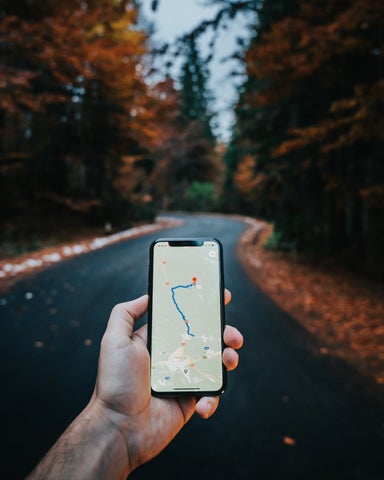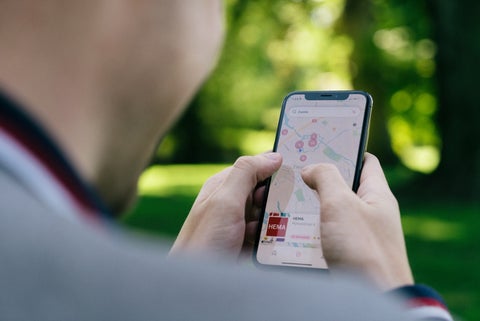How to Use a Store Locator For Your CPG Websites
For most of us, the search for certain products and services begins with the internet. While many online searches end with an online purchase, there are plenty of things out there that a consumer would prefer to run out and pick up for themselves in person.
This type of search usually contains the name of the product or service you’re looking for plus the ever popular “near me” ending. It’s obviously a local search, however, the length a person will go for an item you’re selling all depends on one thing. Whether or not you’ve included a store locator for your CPG websites.
Think about it ー a potential customer visits your site to see if you’re selling a specific item. They like the selection you’re offering as well as the prices, but they can’t find any information about where your business is located, when it’s open, or what it looks like.
So, you lose a customer
They move onto the next business website that offers both the items they’re looking for and everything else from great photos to all the necessary information regarding their store locations.
Then they get in their car and drive to your competitor’s store and spend their money there.
Bottom line? You need a store locator for your CPG websites—and that’s exactly what we’re going to talk about in this article.
What Exactly Is a Store Locator and Why Is it Important?
Put simply, a store locator for CPG websites is a type of software that lets your online visitors know the physical address of your stores as well as the phone number and business hours.
Technically speaking, store locators work by displaying a specific set of markers. These markers represent store locations on a map to help users figure out the nearest location of the business they’re interested in visiting. This is in addition to pertinent business information as mentioned above.

Moreover, store locators for CPG websites and essentially all business websites help to provide valuable information that contributes to promoting brand awareness, trust, and loyalty. For example, this could be in the form of photos of retail locations or even detailed food menus and so on.
According to a survey conducted by Business 2 Community, more than 75% of consumers conduct online research before visiting a brick and mortar type store. This would include checking customer review sites in addition to searching for key information on the company’s website.
The true value lies in whether or not the information potential consumers find on your website is useful. The best store locator for CPG websites will ensure that anyone searching for your business will find the exact answers they’re looking for. Consumers, in general, tend to be most loyal to the businesses that help them by giving them the information they need to make informed purchase decisions.
Now, let’s talk about getting started with using a store locator for your CPG websites. Here’s how it’s done.
Find a Store Locator Solution
The first thing you want to do is find the best software solution to use for your store locator. You can choose between stand-alone software widgets, apps, and even use the Google Maps platform.
The best store locator for CPG websites will be completely automated. This will save you time and energy in terms of manually inputting the location for multiple store locations. Additionally, the software should have geocoding, include driving directions, international mapping (if applicable), and multilingual capabilities.
It’s also recommended that the store locator solution you choose includes enhanced services. These would include IP and GPS detection of user location, which will allow for optimal performance and ease of use.

Optimize Your Store Locator
Once you’ve implemented your store locator and have gone through the tedious ordeal of locating where your items are being sold, you’ll want to begin the optimization process. Optimizing your store locator will not only allow you to create a map, but it’ll put your brand on the map in terms of visibility and the user experience.
Here’s what you need to do in terms of setup and best practices.
Add local content
Both websites and eCommerce sites generate their traffic based on the specific searches for their offerings. Having local content that’s specific to each store will help improve your SEO rankings and therefore, generate more traffic. It’ll also enable users to navigate your maps with ease.
Keep foot traffic in mind
Be sure to highlight any in-store sales, promotions, offers, and other incentives that’ll encourage consumers to visit your retail locations. It’s a good idea to combine your store locator for CPG websites with any dedicated local pages to get more eyes on your products.
Integrate SEO keywords
By using keywords specific to your locations as well as your products and services, you’ll get higher rankings among search engine pages. This will help to increase your brand visibility and trust.
Make sure it’s mobile-responsive
More people use their smartphones than ever to search for products and services. Therefore, your locator solution should be 100% mobile-friendly, otherwise you’ll lose a lot of business!
Include a CTA
While the above steps are most critical in regards to effectively creating a store locator for CPG websites, there’s one thing that many businesses leave out, a call-to-action (CTA).
CTAs can be very powerful in terms of driving more foot traffic to your stores or retail locations that sell your items. For example, Pizza Hut uses a CTA in their store locator to make reservations at their restaurants. Kérastase also uses a CTA for their local pages that encourages users to request an Uber to take them to their nearest partner salon location.

Get creative with your CTA
Your CTA can be as simple as offering the option for customers to reserve an item for pick up before it’s sold out or something similar to encourage a purchase decision.
When leveraged correctly, a store locator for CPG websites will help your loyal customers and potential customers find your business or retail locations. They’ll let everyone know when your stores are open, and if you have multiple locations they’ll let everyone know what location offers which items.
The goal is to help people save time and money while gaining their trust and loyalty.
As the leading distributor of purpose-driven food and beverage brands, Buffalo Market understands the power of an effective store locator for CPG websites. For more technical tips and tricks on improving your CPG websites and overall business, check out our blog.


